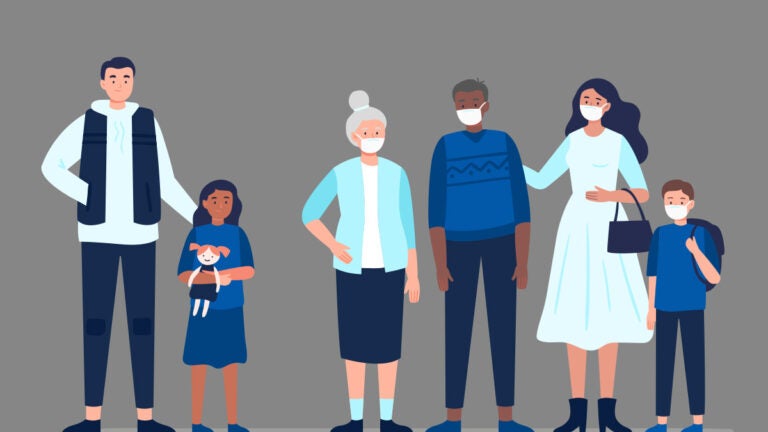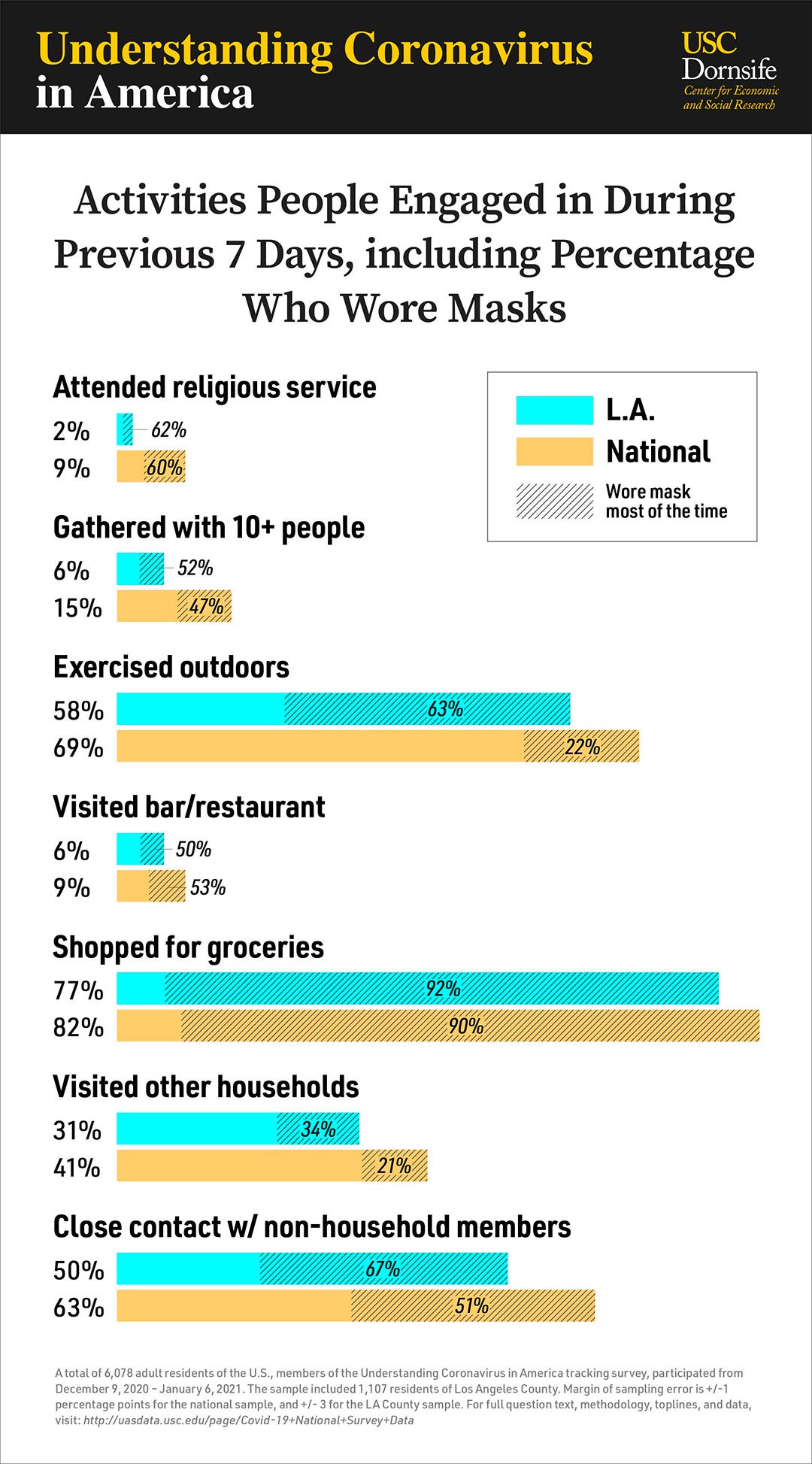
Half of U.S. adults don’t wear masks when in close contact with non-household members
New findings from the Understanding Coronavirus in America Study measure the percentage of people who recently engaged in activities that may put them at risk of infection with COVID-19 and the portion of them who were wearing protective face masks.
The new analysis draws from survey data collected between March 10, 2020, and Jan. 6, 2021, as part of the ongoing study, which is conducted by the USC Dornsife Center for Economic and Social Research.
The analysis produced the following highlights:
- Though 83% of most U.S. adults view wearing a mask as an effective way to stay safe from COVID-19, their mask-wearing behavior is very inconsistent, even while they engage in higher risk activities. There are also large differences based on race and locale.
- Two-thirds of Americans reported being in close contact (within less than 6 feet) with people outside their household in early December, but only about half of them said they mostly or always wore a mask while doing so.
- White people were the least likely to consistently wear a mask (46%) while in close contact with people from other households, compared to Black people (67%), Latinos (63%) and people of other races (65%).
- Only 42% of people in rural areas wore a mask always or most of the time while close to people outside their household, compared to 52% of people in suburban locales and 57% of people in urban locales.
- Compared to the national average, Angelenos are much more likely to wear masks when in close contact with people from other households (67% vs. 52%) and when exercising outside (63% vs. 22%). They’re also less likely to come into close contact with people outside their household (50% vs. 63%).
- Of the 4 in 10 Americans who visited someone else’s home, only 21% wore a mask most or all of the time they were together.
- While 14% of Americans gathered in groups of 10 or more people, just 46% wore a mask most or all of the time they were together.
- The vast majority of Americans wore masks while grocery shopping, which was the most common activity reported. Of the 81% who shopped for groceries in early December, 90% wore a mask.
A need to “redouble efforts”
CESR researchers conducting the current analysis include Jill Darling, survey director, Kyla Thomas, associate sociologist, and Arie Kapteyn, director and professor (research) of economics. Natalie Theys, research manager, and Alwyn Cassil assisted the analysis.
“These findings indicate a need to redouble efforts to convey consistent messages about the overall importance of wearing masks, but more than that, where and when to wear them,” said Kapteyn. “Too many seem to lack a clear understanding of the risks posed by friends and family outside their immediate households.”
“Despite L.A.’s soaring infection rates, it is clear from our data that Angelenos are more willing to wear a mask than people in other parts of the country on average,” noted Thomas. “Still, rates of mask-wearing are far from where they need to be in L.A. to slow the spread of the virus, especially among those who are young, white or socially active.”
About the study
The data was collected from the more than 6,000 members of the Understanding America Study, which is a nationally representative, probability-based online panel of adults who answer tracking survey questions every two weeks.
Findings in this release are based on more than 6,078 participants, including over 1,100 Los Angeles County residents, who responded between Dec. 9, 2020 and Jan. 6, 2021. Margin of sampling error is +/-1 percentage point for the national sample, and +/- 3 percentage points for the L.A. County subsample. Margins of sampling error may be higher for some sub-groups.
More information on how the survey was conducted, as well as links to topline and crosstabs reports and graphs that are updated daily, are available at covid19pulse.usc.edu.
